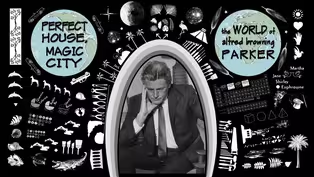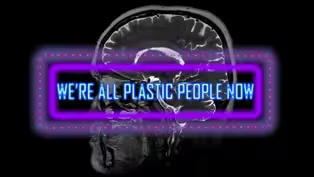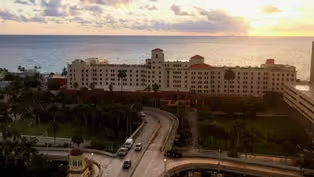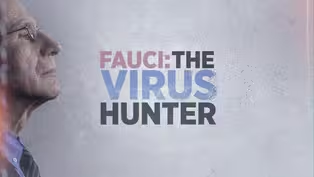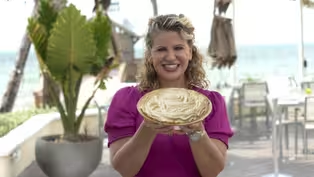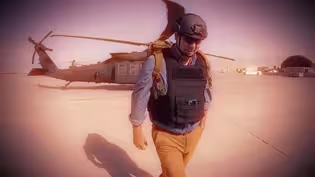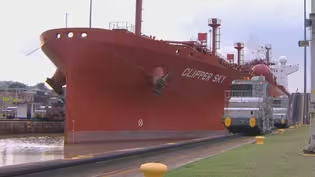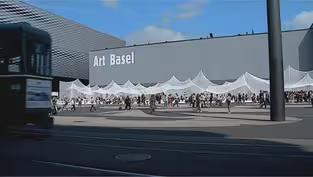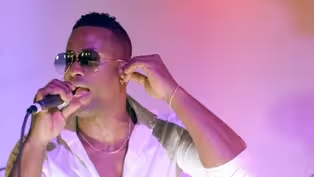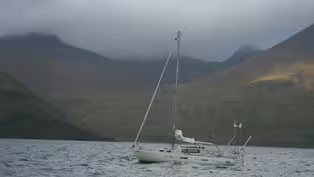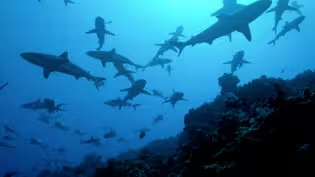South Florida PBS Presents
The Story of Florida State Parks: The Formative Years (1942 - 1970)
Special | 25m 24sVideo has Closed Captions
The second part of our documentary series dives into the dramatic transformation of Florida’s parks
As WWII reshaped the nation, Florida’s leaders—including Governor Leroy Collins and journalist-turned-conservationist John Pennekamp—pushed forward, fighting to protect land and legacy. They both had pivotal roles in the creation of the nation’s first underwater park, and the expansion into iconic sites like Bill Baggs Cape Florida State Park.
Problems playing video? | Closed Captioning Feedback
Problems playing video? | Closed Captioning Feedback
South Florida PBS Presents is a local public television program presented by WPBT
Funding provided by Wachovia Wells Fargo Foundation and Florida Power & Light.
South Florida PBS Presents
The Story of Florida State Parks: The Formative Years (1942 - 1970)
Special | 25m 24sVideo has Closed Captions
As WWII reshaped the nation, Florida’s leaders—including Governor Leroy Collins and journalist-turned-conservationist John Pennekamp—pushed forward, fighting to protect land and legacy. They both had pivotal roles in the creation of the nation’s first underwater park, and the expansion into iconic sites like Bill Baggs Cape Florida State Park.
Problems playing video? | Closed Captioning Feedback
How to Watch South Florida PBS Presents
South Florida PBS Presents is available to stream on pbs.org and the free PBS App, available on iPhone, Apple TV, Android TV, Android smartphones, Amazon Fire TV, Amazon Fire Tablet, Roku, Samsung Smart TV, and Vizio.
Providing Support for PBS.org
Learn Moreabout PBS online sponsorshipMore from This Collection
Documentaries showcasing the South Florida community produced by South Florida PBS.
Video has Closed Captions
A documentary portrait of architect Alfred Browning Parker. (56m 46s)
Video has Closed Captions
Investigation into the hidden story of plastic and its effects on human health. (56m 50s)
The Florida Keys: 200 Years of Paradise
Video has Closed Captions
Journey through the history of the Keys and meet the people who live there. (56m 46s)
Video has Closed Captions
The Historic Hollywood Beach Resort, also known as the "Grand Lady," has a famous and stor (26m 29s)
Video has Closed Captions
Explore Dr. Anthony Fauci's unique legacy in infectious diseases research. (56m 26s)
Video has Closed Captions
Michelle Bernstein tours the Florida Keys in search of local specialties, recipes and more (56m 46s)
Video has Closed Captions
The story of American men and women serving in our wars in the Middle East. (24m 46s)
Panama Canal: Prized Possession
Video has Closed Captions
Explore the history of the transfer of the Panama Canal from the United States to Panama. (57m 23s)
Video has Closed Captions
Basel, Switzerland plays host to the largest and most influential art fair in the world. (26m 58s)
Video has Closed Captions
Experience the explosion of the Latino influence on mainstream American music and culture. (57m 23s)
Red Dot on the Ocean: The Story of Matt Rutherford
Video has Closed Captions
Matt Rutherford risked it all in an attempt to sail alone around the Americas. (56m 50s)
Video has Closed Captions
Mysteries of the Coral Canyon tells the story of how sharks and coral reefs are connected. (55m 1s)
Providing Support for PBS.org
Learn Moreabout PBS online sponsorship[Music] [Applause] It has been said that the story of Florida State Parks is the story of Florida.
A story that reaches back in time like the roots of an ancient oak tree.
It began as a quest to conserve the natural places for future generations and endured as the story of men and women who struggled to preserve what are and will forever be the heart and soul of Florida.
This is the story of Florida's state parks.
[Music] The growth of Florida's state park system was overshadowed by World War II as the Civilian Conservation Corps disbanded and young men across America packed up and joined the war effort.
The CCC had been the primary impetus for the development of Florida's early state park system, a program that suddenly came to a halt.
But the park service dug in.
Its finest days and greatest challenges were still ahead.
Dr. New Deal became doctor win the war.
And on December the 7th, 1941, World War II changed everything.
Florida became a citadel from a handful of military bases.
Florida exploded with almost 200 military installations uh by the end of the war.
And there's a direct correlation between the New Deal and these military facilities.
Early state parks like Maka River, Fort Clinch, and Goldhead Branch converted from CCC camps into military training bases.
Wakulla Springs and Wakulla County in North Florida was used for underwater demolition and also the training of soldiers at Caribel at Camp Gordon Johnston.
across the state.
Many of the state parks were used for physical training.
So the link between the Civilian Conservation Corps and basic training was very powerful.
Today's Jonathan Dixon State Park during World War II was Camp Murphy, an Army Signal Corps.
And u I've interviewed many men who rode horseback along the beaches there looking for enemy saboturs.
The enemy saboturs had come ashore at Pontto Vidra in 1942, but they were also looking for infiltrators and German submarines.
During World War II, the Dade Battlefield Historic State Park served as the site of an army communications training camp.
But this ground is better known for another conflict, the Second Seol War.
On December 28th, 1835, US Army troops under the command of Major Francis Dade were ambushed by Seol Indians in a battle known as the Dade Massacre.
Of more than a 100 soldiers, only three survived.
Today, enthusiastic visitors come to Dade Battlefield Historic State Park to witness the reenactment of that fateful day.
I've been studying this battle and researching it for just about 40 years and I've written three had three books published about it.
Two histories and one novel.
Dade Battlefield State Park certainly has a special place in my heart.
It would be impossible, I think, to spend 40 years, half your life researching one battle and everything pertaining to it and not feel a certain closeness for the for the ground where this battle took place where these soldiers fought valiantly, died, and were buried.
where the Seinals struck the first of many blows toward trying to tell the white society that they would not quietly succumb to being shipped out of their native land.
[Applause] [Music] [Music] The Florida Park Service held its own ground and emerged from World War II as an independent entity under the Board of Forestry and Parks to acknowledge the post-war revival of its state parks program.
Florida tourism explodes after World War II.
It it seemed like every GI wanted to get married, get a job, get a new car, and come to Florida for the summer.
You have to realize two million GIs trained in Florida.
They all swore they would return to Florida one day, and most of them would as as tourists, as transplants, as retirees, but especially as tourist.
Florida State Parks were a tourism magnet, not only for their natural beauty and recreational offerings, but also for their captivating cultural history.
From the inception of the Florida Park Service, its mission included the acquisition and protection of historic sites and memorials.
Bulo Plantation Ruins historic site was such a place.
Once known as Buloville, the remnants of this 19th century sugar mill are a reminder of Florida's early agricultural industry and plantation life.
[Music] historic preservation and state parks and historic sites in general are the one thing that tie us to the history of the land that we're in.
And um in this day and age when you can go to Orlando, go to Miami, go to Jacksonville, you drive down the road and everything looks the same.
You begin to lose sight of what was what was this community about in its life.
And historic sites allow us to understand that.
Governor Leroy Collins is often called the father of the Florida State Park system.
Throughout his political career, he strongly supported the preservation of natural and historic resources in the parks.
Loy Collins was one of the great Flidians.
During World War II, he left his his elected post as a state senator, entering the military.
And he often remarked how valuable it was to see the world, but especially to see parts of America, and he was so impressed with the park system in the West.
Collins's journey through California filled him with big ideas for the young state park system in Florida.
So he wrote a letter to then Governor Millard Caldwell and suggested that Florida take a look at what California had done and try to emulate the state parks program that they had.
Well, according to the way Collins uh told the story, he got a letter back from Governor Caldwell saying in effect that if you like California so much, why don't you stay out there?
Collins was reelected as state senator and eventually became governor.
He introduced a bill which was passed in 1949 as the park board act creating the board of parks and historic memorials.
This was the moment when the Florida Park Service separated from the forestry service and became a truly independent agency.
The board of parks and memorials was commissioned to promote parks for the people and to conserve lands and cultural resources.
John Pennamp who was the first chairman of the board of parks and historic memorials was a one of those larger than-l life personalities.
actually he got his start through his support of the Everglades National Park and it was because of that background uh and his interest at the national park level that he was selected to as one of Phil Warren's appointees to the first state park board.
Penny Camp defined himself as first and foremost a newspaper man whose proudest achievement was winning a US Supreme Court case for freedom of the press.
Get this thing back on the road where we could get some action to solve the whole situation.
He was the editor of the Miami Herald for oh some 30 years and then uh ran the editorial policy for the Miami Herald after that and u for 35 years he wrote a daily column called behind the front page.
It was a column that um had no specific interest just general and wrote a on a myriad of subjects.
Penny Camp's outdoor stories rallied public support for the creation of Everglades National Park and later the state park in Keargo that bears his name.
But as chairman of the newly created Florida Board of Parks and Memorials, Penny found himself in the middle of conflicting philosophies.
Since 1940, Lewis Scogginan had been the long-erving and highly regarded director of the Florida Park Service under the Board of Forestry and Parks, but his management style created a power struggle with members of the board.
Most of them were civic oriented people, came out of the garden clubs and that type of background.
uh they really had little understanding of what the national park philosophy was all about that Florida had inherited.
Scoggin believed in emphasizing preservation of the natural character of parks over the development of recreational facilities.
Well, there was a big difference in how the board saw Skagan's duty and how he saw it.
you know, he he uh assumed that he would continue under the board of parks as he did with the board of forestry and sort of be the boss and get general orders from from the board and and then he would be free to carry it out.
Uh the board, particularly the two ladies on the board, saw it in a different light.
A letter of resignation was prepared for Scoggin, but he refused to sign it and was fired without delay.
He was replaced immediately by Walter Cowwell, who at that time was the park manager at Goldhead Branch and had become a real favorite of the ladies because Walter was more willing to do everything they asked without question.
As stability grew between the board and park service administrators, Penny Camp met with conservationists to develop a plan to protect the coral reefs of the Florida Keys.
He had been unable to persuade the federal government to include Key Largo and its offshore waters in Everglades National Park in 1947.
But a decade later, he helped convince the state and federal governments to combine their offshore lands into a single unit to be managed by the Board of Parks and Memorials.
The lands were dedicated in 1959 and a year later in recognition of Penny Camp's success in negotiating the deals that created the park, the board of parks and memorials named the first underwater state park in America as the John Penny Camp Carl Reef State Park.
and he tells a story about taking his driving his grandkids down to the park to show off and went to the gate as we did this morning and said my name is John Penny Camp and they laughed at him.
Oh, really?
$10 or whatever the fee was.
Anyway, that was his big surprise.
Kind of deflated his ego at the time, I guess.
An Italian sculptor named Edidio Cressy created a bronze statue called Christ of the Deep and donated it to the Underwater Society of America.
After public viewings around the country, it was decided to permanently install the statue in John Penny Camp Coral Reef State Park.
The park board and Mr. Penny Camp decided it was time to move it to the park.
So we transported it down there and put it on on public display in the land base headquarters for a year or two until a design and a location could be picked and uh Mr. Penny called me and a fellow by the name of Sandy Sprunt who was on an advisory council up to his office.
Sandy was with the National Autobon Society and a knowledgeable and a friend and and a and a nice guy.
So he anyway he called us his office and said, "I want you and Sandy to find a location to put that statue in and tell me where it is."
So Sandy and I dove for several days trying to pick a spot on the reef that it would get some protection yet it wouldn't favor any particular marina and some re you know some of the reef would give it some storm protection yet it would be accessible.
So we finally concluded the dry rocks was a place and we reported that to Mr. Penny and he said put it in and we did.
The statue was secured to the reef on August 25th, 1965 and soon became an icon in the park.
But some were skeptical about the impact it might have on the Carl.
At least one marine biologist took a strong position.
Uh Dr. Gilbert Voss of University of Miami, he determined that it would would come loose with a hurricane and damage the reef and, you know, destroy some of the car, which would have been a bad bad thing.
But, uh, we put it in and and uh, Mr. Penn said, "Thank you."
And we had a big dedication and two weeks after we put it in, Hurricane Betsy came right over at 165 miles an hour.
And that may have been one of the most exciting experiences is to go back out there when the when the water was still a color of coffee and dive down and feel that hand.
It was still there and and it's still there.
And that was 19 65.
Today, John Penny Camp Jr. enjoys a visit and remembers his father's guiding hand in developing the state park system.
Well, it means a great deal of course because it's uh keeps in our memory and all my father and what he did not just for this park but for the entire park system as far as the state of Florida goes and eventually that what he was able to do throughout the United States as far as the conservation efforts go and u it's a good tribute to him.
I think John Penny Camp remained a dominant force on the board of parks and memorials, making Florida's state parks more accessible to the people.
Millions and millions of Americans flock to Florida down highways with mystical names and magical associations to see the springs, to see the lakes, to everyone wanted to go to the seashore.
Uh but they also came for the state parks to see the oddities of the caverns to see the beauty of the Hillsboro River to go canoeing, go kayaking.
Camping became very popular.
Uh that was not originally conceived I think in the 1930s but by the 50s there was a camping industry.
People now began to come down in trailers.
So, uh, the park system adapts to changing fashions and changing accommodations.
As the value of tourism in Florida state parks grew, Governor Ferris Bryant called on the legislature to pass the Outdoor Recreation and Conservation Act of 1963, laying the foundation for a broader conservation and land acquisition program.
Florida, known for its beaches and shoreline, had no park on Florida's Atlantic coast south of St. Augustine except for that 400 ft of beach at Hu Taylor Burch in Broward County.
and it had no park on its Gulf Coast east and south of Panama City and virtually the entire peninsula of Florida with no state park.
So we started looking for the best properties that would serve the best need, the highest need.
And probably the most exciting property that we undertook was the Cape Florida property on Kiscane.
But earthmoving machinery was clearing the land at Cape Florida to build a resort community.
And the idea of a state park met resistance.
I certainly am not going to have a state park, a national park, a city park, a county park, or any kind of park you want.
But the trouble with this park is it's in the wrong place and it's the wrong park for what we need.
But Bill Bags, editor of the Miami News, put together a campaign to save what he called the last pristine beach in the area and the oldest lighthouse in South Florida.
He saw that uh we were losing a lot of our potential park space and our shoreline because of development.
The area was going crazy in development after World War II as we know.
And um when the southern tip of Kibas gain looked as if it was coming under intensive development in terms of a whole slew of town houses and all, he led a drive in the 60s to set aside hundreds of acres of that for a Florida state park.
But he had a huge challenge in that um the original subtropical foliage had already been removed from there preparatory construction.
They had already denuted that whole land.
And this member of the Alammon family, very prominent Cuban family, came to Miami circa 1950.
They were ready to build a track housing there, town houses because Kubis came was under tremendous development at that time.
So really the die had already been cast and he was able to reverse that.
He and some others and uh it opened as a state park on January 1st, 1967, named for him appropriately enough.
You're talking about over 800 acres of state park.
So we're indebted to Bill Bags for that.
Uh you know, you've got the ocean there.
You've got a wonderful mangrove stand.
You've got walking trails.
Well, you hear so much about environmentalism today, but we ha.. strong movement here 50 years ago, out of which all this is growing today.
Environmental movements help bring about the federal land and water fund created in 1965.
Cape, Florida was the first state park acquired under the program.
We got an opportunity to acquire another highly desirable property over in Penllis County, another area of high need, uh, Kaledesi Island, and we wanted desperately to acquire both of them at the time with very limited funds.
So, we were able through the cooperation of Mrs. Alman and her attorney Marian Sibi to delay the purchase of one of the installments on Cape Florida so we could use that money with some matching federal funds to go ahead and consummate Kaledia Island which consisted of about 20 separate ownerships.
And once you get a deal like that negotiated, you don't want to lose it.
Caladisi Island is one of the kind of last remaining natural uh shore communities in this definitely in this area and probably in most of Florida.
Our bird nesting season will begin just about April 1st and we have quite a few shore birds that do nest here.
On April 1, we're going to be looking at our um Wilson and snowy clovers.
Uh they'll start nesting as early as April 1st.
Uh the majority of the birds after that will begin right around neighborhood of uh May 1st through the entire month of May.
The oldest known inhabitants of the island were the Tokabago Indians.
Artifacts from a shell mound deep within the mangroves date their habitation to the early 1500s.
In 1888, a Swiss immigrant named Henry Char arrived with his wife Catherine and daughter Myrtle to build their homestead on the island.
It's pretty amazing to believe that there was, you know, there was a house out here.
There was a few buildings and no electricity, no running water.
The only way to get around is a rowboat.
And to believe somebody came out here and lived through all that, it's uh it's pretty amazing.
Kaladisi Island became part of the Florida State Park system in 1967 when more than 650 acres were acquired by the park service.
With the assistance of state and federal funding programs during the 1960s, land acquisition soared and Florida's state park system grew steadily.
But it was exciting and it was fun and it was rewarding because we were I don't mind saying so immensely successful and from there we got just about every project we set out to get.
In 1969, a governmental reorganization created the Department of Natural Resources and its Division of Recreation and Parks, which assumed the functions of the former Board of Parks and Memorials.
From just 12 units prior to World War II, the Florida Park Service had grown to 65 state parks, providing conservation and outdoor opportunities across the state.
The visionary movement to conserve the natural places had survived the war years, changing philosophies and funding struggles, transforming the challenges into opportunities.
Next time on the story of Florida's state parks.
As irreplaceable landscapes become targets for development, the Florida Park Service races to conserve them before they are gone forever.
Heat.
Heat.
Heat.
Heat.
Support for PBS provided by:
South Florida PBS Presents is a local public television program presented by WPBT
Funding provided by Wachovia Wells Fargo Foundation and Florida Power & Light.
